Undoubtedly, wrist watch is an integral part of modern fashion. Especially for men as we guys don’t really have that much accessory options to begin with. A wrist watch is a unique fashion accessory because while its main function is to tell time, it also increases our style – in other words, making our whole image better.
But fashion sense is not the only deciding factor in choosing what watch to wear. You see, there are at least 20 types of wrist watches in existence currently and choosing what type of watch to wear is most important to perfect your style for whatever event or occasion you’re going to.
Yep you read that right. There are 20 types of watches. But of course, all of them are not independent of each other.
In fact, most watches can be categorized into a few types (such as an automatic + analog + diver’s watch).
This article will list down all of the 20 types of watches, and which one you should get depending on your need. If you feel there is a type of watch that I’ve missed, please let me know by commenting down below.

Basically, watch types can be divided into 3 huge groups as per the list below:
Group 1: Watch Movement Type
2. Quartz
3. Solar
4. Kinetic
5. Chronometer
6. Spring Drive
Group 2: Watch Display Type
7. Analog
8. Digital
9. Hybrid
10. Tactile
11. Touchscreen
Group 3: Watch Function & Style Type
12. Dive
13. Chronograph
14. Military
15. GMT
16. Dress
17. Aviator
19. GPS
20. Smartwatch
It should be noted that these types of watches are not independent of each other. For example, my Seiko Sumo SBDC033 is an automatic watch, with analog display and serves as a diver’s watch.
Group 1: Watch Movement Type
What is watch movement? It’s basically the driving engine for the whole watch, the mechanism that propels that ticking hands. It is the heart of the watch and without a movement, a watch is as lifeless as the steel block that’s used to make it.
Thus, it’s befitting for us to look at watch movement types first and foremost. There are 6 different types of watch movement nowadays as listed below:
1. Automatic & Mechanical
2. Quartz
3. Solar
4. Kinetic
5. Chronometer
6. Spring Drive
It should be noted that these are not the only movement types that exist, but rather the ones in the market right now.
I’ve skipped on some lesser known movements such as tuning fork and electric watches as those are not manufactured anymore.
1. Automatic & Mechanical
For true horologist, automatic and mechanical movements are totally different and should not be lumped together (see my article here) but I’ve decided to do just that for the purpose of simplicity.
I’m sure you should’ve encounter automatic watches (and mechanical to a lesser extent).
If you flip through magazines, you might have noted that many high end watches – the likes of Rolex, Omega, Patek Philippe, Vacheron Constantin, etc. – usually has this word on the watch face/dial.
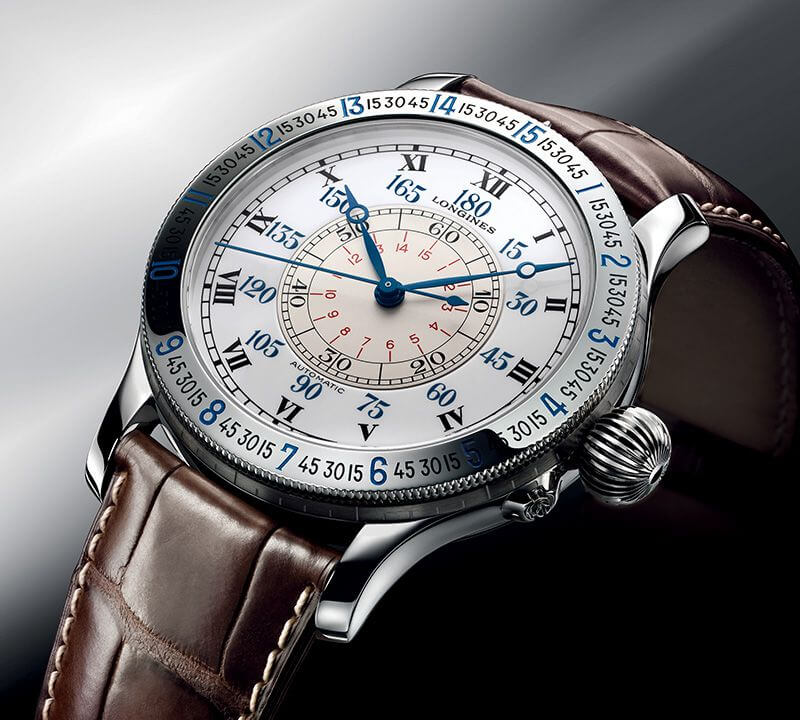
But what do automatic and mechanical really means for a watch? To put it simply, it’s the original way of how to run a watch by using mechanical parts without electricity.
One of the way we can identify an automatic/mechanical watch is by looking at the seconds hand.
Does it tick every second or it’s sweeping (or actually ticking at a fast rate)?
The unique feature of this type of watch is the seconds hand will sweep, giving a very relaxed action that’s just very nice to look at.
The internal workings on an automatic and mechanical watch can be elaborated in 5 components:
i. Energy source
The watch uses potential energy stored inside a long spring or mainspring. The mainspring will unwind slowly while transferring the energy to rotate the series of wheels or gear train attached to it.
ii. Wheels or Gear Train
It functions to transfer energy from the mainspring throughout the watch. By using gears, a small unwinding motion of the mainspring can power the watch for a longer time, and thus enables the power reserve to be increased.
iii. Escapement
Escapement consists of a set of escape wheel and forked lever that work in tandem with the balance wheel to ensure the watch is running accurately. It’s also responsible to keep the gear train from spinning out of control via the forked lever.
iv. Controller or Balance Wheel
At the heart of any automatic/mechanical watch is the balance wheel (the round circle that can be seen to be rotating furiously back and forth). It oscillates at a high speed and ensure the timing is accurate.
v. Time Indicator
The time indicator is the 3 hands (second, minute, hour) that’s very important to show the time.
(Click HERE to read the details on how automatic watch works)
So what’s the difference between automatic and mechanical watches?
The difference is only in the energy source part. Mechanical watch mainspring need to be tighten by rotating or winding the crown.
Automatic, on the other hand, uses a weighted rotor to wind the mainspring. The rotor will “automatically” rotate as we use the watch.
Hence, the term automatic or also commonly known as self-winding (the watch winds the mainspring on its own). Without a doubt, automatic watch is more convenient to be used compared to mechanical.
It’s also more widely manufactured too. Mechanical watch has a lesser following and quite hard to get your hands on. For a very unique and characteristic watch, automatic and mechanical is the one to go for.
Why You Should Get An Automatic/Mechanical Watch?
- Has a very cool movement that’s run by mechanical parts without needing a battery/electricity
- No need for battery change
- Beautiful sweeping second hand
- Very unique and not ubiquitous as quartz
Why You Should NOT Get It
- Automatic and mechanical watch is not as accurate normal quartz watch ( +-20 seconds per day)
- Can be more expensive than quartz
- Has a limited power reserve (typical values range from 38 hours to 50 hours)
(Click HERE to check out my list of the 10 best affordable automatic watches under $200!)
2. Quartz Watch
I bet most of you must have stumbled upon the word “Quartz Watch” on any watch before. Many should know that quartz is also known as silicon dioxide or sand. It’s an abundant mineral on earth but what does it has to do with our watch?
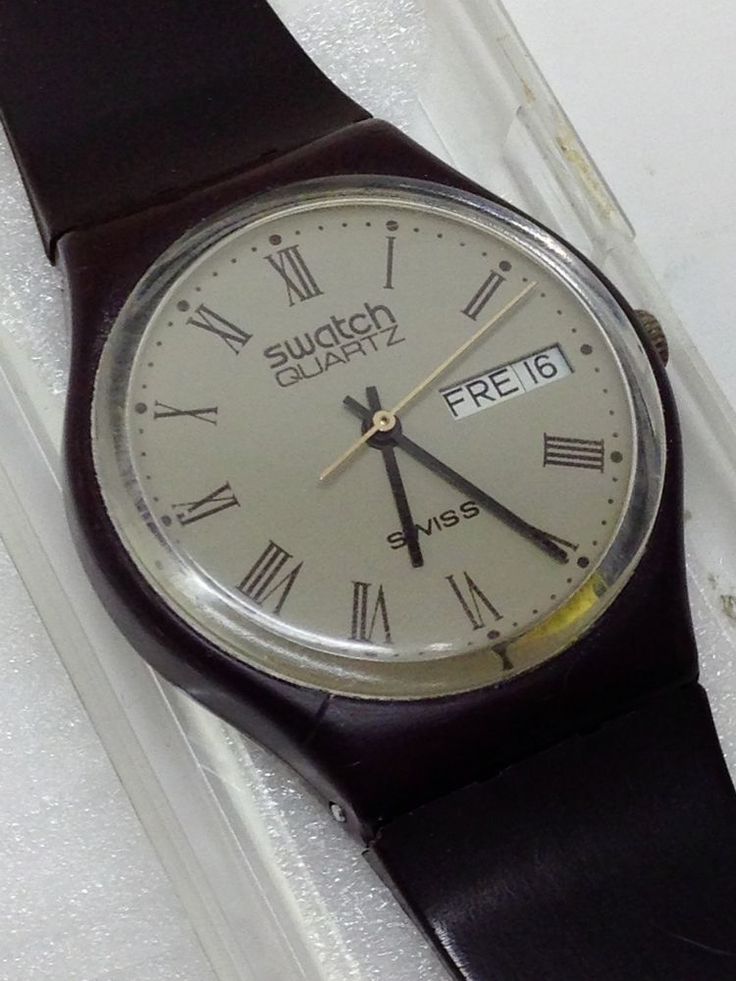
Due to the inaccuracy automatic watch which can reach up to +- 20 seconds per day, quartz watch is invented.
Instead of using purely mechanical movement, the watch uses quartz crystal oscillation and an integrated circuit to keep time.
With such a high oscillation frequency (typical quartz watch crystal vibrates at 32768 times per second), the room for inaccuracy is greatly diminished.
Hence, quartz watch can has a greater accuracy of about +-10 seconds per month. It’s also not weird for a high quality (aka more expensive) quartz watch to has surreal accuracy of +-10 second per YEAR.
Without a doubt, the beauty of quartz watch lies in its superb accuracy at affordable price. Speaking of price, quartz watch is the most affordable type of watch movements.
It’s relatively simple to be build and doesn’t cost much. You can even get one for as low as $10 even.
And that’s one of the main reason why it’s so popular. It’s also fairly robust, though this is highly dependent on the quality of the manufacturing.
But as a movement, quartz watch is able to withstand more punishment compared to automatics.
If you want an accurate watch for use, get the quartz watch.
(Click HERE to read more about quartz watch and how does it works)
Why You Should Get A Quartz Watch?
- Can be had for a very affordable price
- Accurate timekeeping
- Light and has slimmer profile compared to automatic watch
Why You Should NOT Get It
- Battery change is required every 1-2 years and is usually unannounced which can create nuisance at times
- Very common and does not has a unique factor
3. Solar Watch
What’s the most abundant and clean energy in the world? Yep, that’s right. It’s solar energy. And a solar watch is as simple as that – it captures solar energy and change it into electricity via photo-voltaic cells on the watch’s face.
The electricity will then be stored inside a power cell. From then on, the mechanism of solar watch is similar to quartz watch.
Citizen BM7170-53L above is an example of a solar watch under the Japanese’s Eco-Drive label
What this gives us is a watch that can run forever, as long as you expose it to a bright enough light. Yes, solar watch does not only uses sunlight (like its name) but any kind of light that’s bright enough will be able to charge it.
Another great feature is the long duration of its power reserve up to 6 months. This means there is no issue on keeping the power reserve from depleted as long as we uses it sparingly.
This is very different than automatic watch that need to be used at least once a day to keep it from being dead. Another advantage? No more dreaded dead batteries!
Current improvement in solar watch technology gives us a better solar watch than ever before. You hardly notice the photo-voltaic cells on the watch anymore.
Early solar watch is basically a watch with a solar panel on top of it. Now, the solar panel is cleverly hidden under the dial – and yet it’s functioning as good as ever.
Not to mention the efficiency of the panel is hundred times better nowadays. For a fuss free and accurate watch, the solar watch is No. 1 on my list.
p/s: Combination of chronograph function with solar watch is the best as we can use the stopwatch function without any fear of draining the battery!
(Click HERE to learn more about solar watch)
Why You Should Get A Solar Watch?
- Can be recharged with any light
- Very convenient as the power reserve is very long (up to 6 months) and easily rechargeable
- No need for frequent battery change
- Harvesting energy from sunlight is a good effort towards energy sustainability
Why You Should NOT Get It
- Solar watch is more expensive than normal quartz watch
- Still need to change its batter/capacitor every 7-10 years
Solar watch is more expensive than normal quartz watch
(Check out also my list of the best solar watches under $200 HERE)
4. Kinetic Watch
Another great alternative for the normal quartz watch is the kinetic watch. Everyone knows that kinetic is associated with movement but what does it has to do with a watch?
In simplest term, kinetic watch is a marriage between quartz’s accurate timekeeping and automatic’s self-winding mechanism. What this gives is a quartz watch that does not need a battery replacement but is regularly recharged by continually using it.
Above is the Seiko SUN019, a kinetic watch
It also has a weighted rotor like automatic watch that spins whenever the watch moves. But unlike automatic watch with its mainspring, kinetic watch turns this rotor movement into electricity by virtue of an internal dynamo.
This electricity is then stored inside a power cell with a power reserve of up to 6 months. For me, I’d gladly take a solar watch over kinetic watch any time. It’s just I feel that kinetic’s concept is not as good as solar.
One area that I feel solar watch wins is on recharging convenience. With kinetic watch, we still have to wear the watch to charge it.
But with solar watch, we just have to put it under a bright enough light for a few hours at a time. It’s much easier, more convenient and a cool green energy concept.
This is just my opinion so let me know what you guys think about these two types of movements.
On the other hand, if you still want to feel that weighted rotor spinning with your every move but hate the inaccuracies of automatic watch, then this kinetic watch is a good choice.
(Click HERE to learn more about kinetic watch)
Why You Should Get A Kinetic Watch?
- Wants a self-recharged quartz watch to eliminate the need to change battery
- An accurate quartz but with an automatic watch-like feel
Why You Should NOT Get It
- Don’t want to have to wear the watch to recharge it
5. Chronometer Watch
Chronometer is not to be confused with chronograph (I’ll touch about it later on in this article). While chronograph is basically a stopwatch, a chronometer is in simplest term a very accurate automatic watch.
Referring back to the problem of automatic watch’s accuracy, the +-20 seconds per day can be a bit too much for people of the industrial age to handle.
Especially so for industries or occupation that rely on accurate timekeeping such as railroad, naval expedition etc.
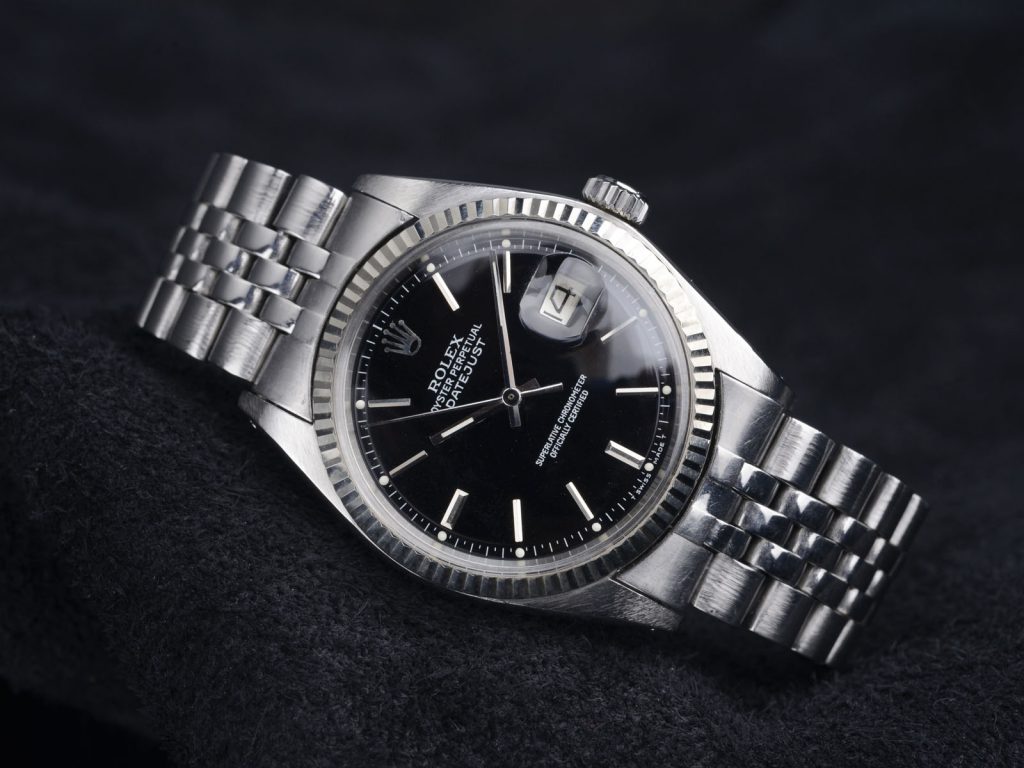
Rolex is a luxury watch makers that has most of its watches chronometer certified
As such, mankind tried to create an accurate automatic watch that will have acceptable accuracy limit and these special made watch is called the chronometers.
Technical wise, the watch is made of high quality materials that won’t expand or contract easily with temperature. It’s movement is also more advanced than the rest. Some of the it also is a hi-beat movement to reduce deviations in accuracy.
Currently, the name chronometer is only obtained by watches that have been tested and certified by the Contrôle Officiel Suisse des Chronomètres (COSC), a testing institute in Switzerland.
The watch is tested in 16 days at various positions (different positions of the watch i.e face up, face down, vertical etc. can affect its accuracy – think gravity) and temperatures.
For comparison purposes, chronometers need to have an average daily rate of -4 or +6 seconds/day. Only watches that passed COSC requirements will be granted chronometer status and can put the word on its dial.
But what about those watches that don’t have chronometer inscribed on its dial? Is it not accurate?
Well, some watchmakers choose not to submit their watches to Switzerland for COSC testing as it will undoubtedly involve some cost.
Some makers also have their own QC testings that is of the same standard as COSC. In my opinion, chronometer status is not really required in this age (we already have our smartphone with the most accurate time remember?).
But if you do want to get an advanced automatic watch with a certified accuracy, perhaps you should look at chronometers.
(Click HERE to learn more about chronometer watch)
Why You Should Get A Chronometer Watch?
- The most accurate automatic watch that money can buy
- Chronometers are tested to be able to keep accurate at various positions and temperatures
Why You Should NOT Get It
- It’s much more expensive than normal automatic
6. Spring Drive Watch
In 2005, Seiko released the spring drive movement, a revolutionary movement that brings horology to a different level. Like kinetic watch, spring drive watch is also can be said to be a union between automatic self-winding mechanism and quartz accuracy.
But it went further than kinetic and is one of the most technologically advanced movement right now. Spring drive energy source is the same as an automatic, that is it has a mainspring that stores potential energy.
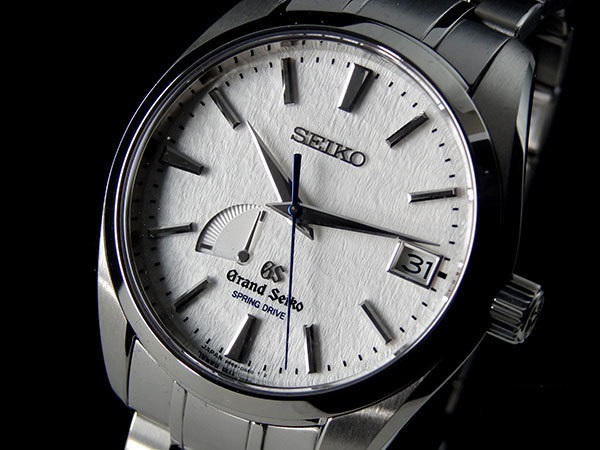
There’s also the same rotor to wind the mainspring when the watch is being used. The gear train is also the same too.
But what spring drive improves upon the movement is the timekeeping part.
Instead of the balance wheel and escapement, spring drive uses tri-synchro regulator to keep time.
This new inventions uses an integrated circuit coupled with a quartz crystal to ensure the watch is running at a perfect accuracy.
It does this by applying electro-magnetic force to slow down the gear train when and if required.
(If you’d like to learn more about how spring drive works, click HERE to read my in-depth article on it)
The result is a new type of watch movement with quartz-like accuracy but is powered by the normal mainspring as in an automatic watch. The spring drive is rated to +-1 second per day accuracy, though many owners testify it’s way better than that.
And another unique characteristic of the spring drive is the continuous sweeping second hand. It’s a true sweeping action because the gear train is only slowed down by the electro-magnetic force and not actually stopped such as in automatic watch.
The second hand on an automatic is actually comprised of a few small movements (typically 6 to 8 beats per second) that give the sweeping action.
But please be warned, spring drive costs a bomb to own! If you want a cutting edge watch movement, there is nothing better than a Seiko spring drive watch.
Why You Should Get A Spring Drive Watch?
- The prestige of owning a revolutionary watch movement
- Tri-synchro regulator keeps the watch very accurate
- An automatic watch with quartz-like accuracy
- The true sweeping second hand
Why You Should NOT Get It
- Is much more expensive than normal watches (automatic or quartz)
Group 2: Watch Display Type
After movement, the next thing that define a watch is the display type. The display is very important as that’s what will be shown to us every time we look at the watch.
There are 5 different types of watch display currently as listed below:
7. Analog
8. Digital
9. Hybrid
10. Tactile
11. Touchscreen
7. Analog Watch Display
Analog watch display is the oldest and original display of a watch. It features the very common hour numbers (1 to 12) positioned circularly with the 12 o’clock at the top.
The hour numbers is sequenced from 1 to 12 in a clockwise manner. Most analog watch has 3 hands: hour, minute and second.
Above is the Tissot Le Locle T41.1.423.33 with 3-hands analog display
The hour hand is the shortest, followed by the minute hand and the second hand.
One of the disadvantage of analog watch is it can be quite hard to tell the accurate time at a glance, spefically the minute hand.
If you notice, most watch has the minute hand not extended until the edge of the watch where the markers are located. This causes the minutes to be harder to tell accurately.
This is not the case with the hour hand which is easily deciphered since the hour markers are easily recognizable.
The second hand on the other hand is almost always very long and will touch the markers, thus reading them is a breeze. This is one area that the digital display (next watch display type) trumps over the analog watch.
Regardless of this disadvantage, I personally hold the analog display dear to me. I like the fact that it’s not digital – at least half of my day is spent looking on a screen, be it computer or TV. Thus, the analog watch can be said to be a sort of an escapade LOL.
If you are like me and sick of being surrounded by digital screens, you’ll surely enjoy analog watch =)
Why You Should Get An Analog Watch?
- Wanting a break from all those digital screens around us
- A unique watch that channels the characteristic of early days watch
- It’s just look better than a digital watch!
- The go-to watch to complement your formal attire
Why You Should NOT Get It
- Analog watch can be a bit hard to tell time
- Does not has as many functions compared to digital watch
8. Digital Watch Display
The anti-thesis of analog watch is the digital watch display. It’s currently the cheapest type of display type nowadays, thanks to mass production of LCD that make it cheaper than even the analog display.
Brands like Casio G-Shock is a great example which I believe almost everyone has encountered at least one of these before.

Casio G-Shock GWM5610-1 above is the basic form digital watch that’s very affordable and popular
Digital display has many advantages over analog display. Firstly, it can tell time easily and accurately.
There’s no need to try figuring out where the minute hand actually land. The minute counter of digital watch tells you exactly what time it is, even till the exact seconds.
It’s a really convenient tool especially for those that want a quick and easy watch to read.
Furthermore, most digital watch also comes with AM/PM indicator and day/date display.
It’s very easy to fit many information into a small watch as opposed to the analog type.
Not only that, some digital watch also has a built-in backlight that can be activated at the push of a button.
This feature is very important for those that want a true outdoor watch. This is a really great feature in my opinion.
You can’t deny that being able to tell time in the dark is not beneficial (not to mention very cool too!).
Perhaps the only disadvantage of a digital watch display is how ubiquitous it is nowadays. Not only on people’s wrist, but also on our smartphones, computers, TV – basically all digital things around us.
Why You Should Get A Digital Watch?
- For those that would like an easy watch to tell time with precise accuracy
- Digital watch displays a wealth of other information beside time such as AM/PM indicator, date and day
- Usually is bundled with many functions such as chronograph, timer, alarm, backlight, and perpetual calendar
Why You Should NOT Get It
- A bit too common display with every digital display around us
- Not a great choice for formal events
9. Hybrid Watch Display
Certain watches combine the analog and digital display to create a hybrid watch display.
What this gives is the more traditional look of the analog with rich-information from the digital screen. It’s suited for those that want the best of both types of watches.

The Casio G-Shock GA 100 above is an example of a hybrid watch with analog and digital display
The analog is undeniably better looking (at least for me LOL) and can be more recognizable to some people.
Digital part of the watch is usually for the extra info such as date, day, even the time in digital display.
Not to mention these types of watches usually comes with other myriad of function such as chronograph, alarm and backlight thus making them a great choice.
Why You Should Get A Hybrid Display Watch?
- Combination look of the analog watch hands and digital display
- Additional information such as date, day and time
- Usually comes with many functions (alarm, backlight, chronograph)
Why You Should NOT Get It
- Can be too busy and too sporty, making it not suitable for formal occasion
10. Tactile Watch Display
Tactile watch display is the precursor to the hot touchscreen enabled smartwatches today (more on that later). Tactile watch, such as Tissot T-Touch watches, is superior than a normal digital watch, but not quite there yet.
Yes, it responds to touches by human, but it can only be used to select commands, activate functions, and so on.
This is the Tissot T-Touch T0914204705701 with tactile display that enables access to its functions just by tapping on the screen
In other words, tactile watch display replaces the need for many pusher buttons, especially for watches with lots of function (such as the Tissot T-Touch).
Rather than having to push buttons many times to cycle through functions, the watch is programmed to open a function if we touch a specific part of the screen.
This makes a watch with lots of functions much easier to operate and improves its user experience. Not to mention our fingers can get a bit sore if we need to push the hard pushers a lot too. Because of this, a tactile watch is better in this regard.
Why You Should Get A Tactile Display Watch?
- An evolution of the typical digital watch (which is cool!)
- Easy to access the various functions without having to cycle through using pushers
Why You Should NOT Get It
- Is more expensive than the normal digital watch
11. Touchscreen Watch Display
The last watch display type, and perhaps the coolest right now is the touchscreen watch.
It’s being widely used for smartwatch (which I’ll delved deeper in the watch function type later on) to execute many cool things on a watch that we can only dream of a few years back.
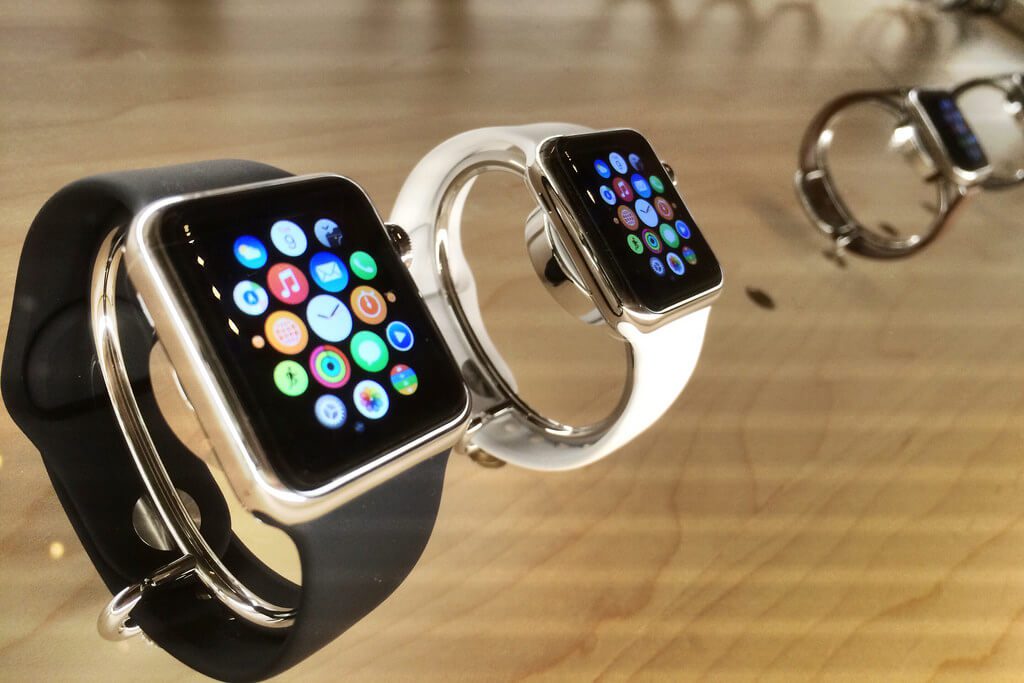
It’s hard not to think about the Apple Watch when discussing about touchscreen watches right?
Touchscreen watch is on a whole different level than a tactile watch. It usually has color panel and react to our finger movements (swipe, touch, push) just like a smartphone which make it a very cool gadget to have.
Imagine doing all the things you’ve done on your phone, but on your watch instead. Okay, I have to admit that the experience is not as good as our phones due to the small screen size.
It’s a bit cramped and replying to messaged can be quite tricky. Not only that, we need to charge it once every few days as it uses a lot of battery juice.
But still, for a cool gadget that has many functions, the touchscreen enabled watch is a great item to have.
Why You Should Get A Touchscreen Display Watch?
- The coolest gadget in town right now
- Colorful watch display that can be easily customized to your taste – just like your phone’s wallpaper
- Lots of functions at your fingertip
Why You Should NOT Get It
- More expensive than the normal digital watch
- Need to be charged once every few days
Group 3: Watch Function & Style Type
The last group of watch types is the function and style groupings. In this group, a watch can be segregated into these 9 types based on functionality and style:
12. Dive
13. Chronograph
14. Military
15. GMT
16. Dress
17. Aviator
18. Atomic Radio Controlled
19. GPS
20. Smartwatch
I bet you never know there’s so many watch function and style types right?
Well, thanks to technological advancement, watches nowadays are becoming more advanced than only just telling time. Let’s check them one by one!
12. Dive Watch
One of my favorite watch is dive watch. This little timepiece is all what it’s name is about: a watch that we can use for diving and other water related activities such as swimming etc.
A dive watch comes with a water resistance rating to denote how depth a water pressure it can withstand.
That’s the reason why you’ll find some watches has “100 m” or “330 ft” marked on the dial – that’s the resistance rating alright.
Seiko Sumo SBDC033 above is an example of a dive watch with high water resistance and rotating bezel. Notice also the oversized hands and markers that are filled with green lume.
Another feature that a dive watch will has is shock resistance and for some, magnetic resistance. These criteria are the reason why dive watches are more expensive as well as bulkier than other types of watches.
To withstand such great water pressure, the construction of the watch need to be very tough and sturdy.
Not to mention it typically uses rubber seals to protect the small openings around the crown from water ingress. Some dive watches also employ screw-down crown for extra water resistance.
Additionally, true dive watch need to adhere to ISO 6425 requirements in terms of its physical and water resistance testing.
The watch also comes with a unidirectional rotating bezel that can be used to track dive time. Lumes is also lavishly used on top of the hands and markers to assist in telling time in the dark area under water.
While dive watches are built around practicality with big and easily read markers/hands, its also one of the most beloved watch.
I find dive watch to be very pleasant because of its tough and manly look. And since its sturdily built and heavy, there’s the feel of assurance that my dive watch will not break when I’m doing any outdoor stuffs.
Also, have I mentioned that it’s very versatile and can be used with any attire? =)
(Click HERE to learn more about dive watch)
Why You Should Get A Dive Watch?
- Water resistance rating means the watch can be used for diving and water activities
- Sturdy built with shock resistance
- Great and versatile look
- Lume will assists in telling time in low-light condition
- Rotating bezel can be used to time dive, or other things e.g baking, exercise, etc.
Check out my list of the best automatic dive watches under $500 HERE
Why You Should NOT Get It
- It’s more expensive than normal watch
- A heavy watch due to all the water resistance (unless you get a titanium watch for a higher price)
13. Chronograph Watch
Chronograph is usually mistaken for chronometer (or vice versa) due to their name similarity but I can assure you it’s not even remotely similar to each other.
While a chronometer is an accurate automatic watch, a chronograph is basically a stopwatch that we can use to record the duration/time of any event.
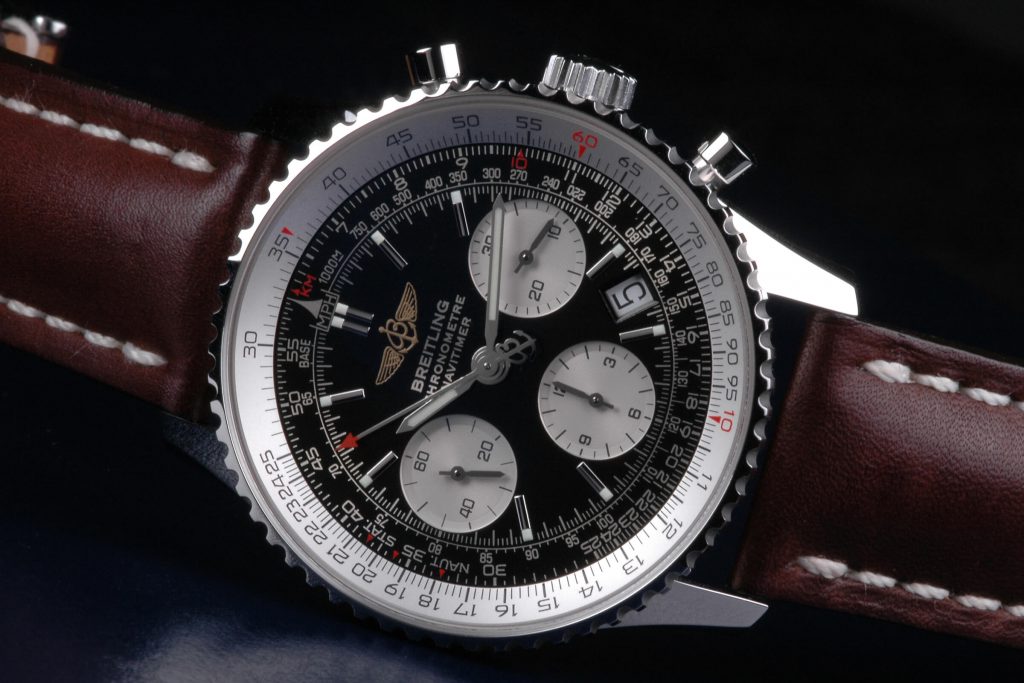
This is the Breitling Navitimer, one of the most popular chronograph watch
To set them apart on an analog watch is very simple. Just look on the dial and if the watch has many subdials with some pushers at its side, then that’s a chronograph.
For a digital watch, chronograph is almost always part of the watch (well, it’s not that hard to make a stopwatch function in a digital watch right?).
In my opinion, there are 2 things that set a chronograph watch apart from other watches. First, the look of the watch with various subdials is very stylish. The dial is complicated and busy, but as Breitling has shown, such a busy watch can be designed to look super cool.
Secondly, the stopwatch function is very useful in our everyday life. While the rotating bezel on a dive watch can do the job too, chronograph’s subdial make for an easy way to tell elapsed time at a glance.
Not just that, some chronographs are also equipped with tachymeter or telemeter scale that provide additional information.
(Click HERE to read my article on chronograph watches and it’s various usages)
Why You Should Get A Chronograph Watch?
- A very useful stopwatch function to time any event
- The subdials design make the watch looks sophisticated, busy and cool
Why You Should NOT Get It
- It’s more expensive than normal watch. A good automatic chronograph can cost a bomb while digital or quartz chronograph is still affordable
14. Military or Field Watch
Looking back a few centuries ago, pocket watch was the norm and a tool for gentlemen. It was not until the popularity of “wearing” a watch on the wrist that wristwatch became popular.
And that popularity can be attributed to military watch and aviator watch. Military or field watch is a type of watch that was worn by armymen back during the warring periods of WWI and WWII.
During these times, soldiers need watches to ensure synchronized movements during missions. Thus, wristwatch became very important.
The general public seemed to catch on this trend after that and now, wristwatch is the norm while pocket watch become obsolete.

Citizen Eco-Drive BM8475-26E above is an example of a military watch
Just like dive watch, military watch is built upon purpose. You’ll find a very easy to read dial on it.
It’s also not as shiny as other watches with little to no highly polished surfaces. In fact, some of them are coated with matte paintings.
Modern military digital watch also uses rubber case for durability in extreme condition. The idea is why do we have to make a beautiful and shining watch if it’s going to be used on the dirty field?
For me, military watch is great for outdoor activities due to its rugged look that’s perfectly suited for these purposes. Need a watch for your camping expedition? Get a military/field watch!
(Click HERE to learn more about military watch)
Why You Should Get A Military Watch?
- Built for outdoor use
- A watch with rugged and manly styling
- Normally is quite light and easy on the wrist
Why You Should NOT Get It
- The style is not suitable for formal use
15. GMT Watch
One problem with the concept of time is how it differs from place to place. Different locations on earth have different time zones that are demarcated based on the longitude of the place on our earth.
For anyone that frequently travels or having a cross-globe business, this pose a problem to keep track of things.
A pilot that usually flies between continents will find it hard to communicate with his/her love ones.
Likewise, communication between within countries is important for a multinational corporation.
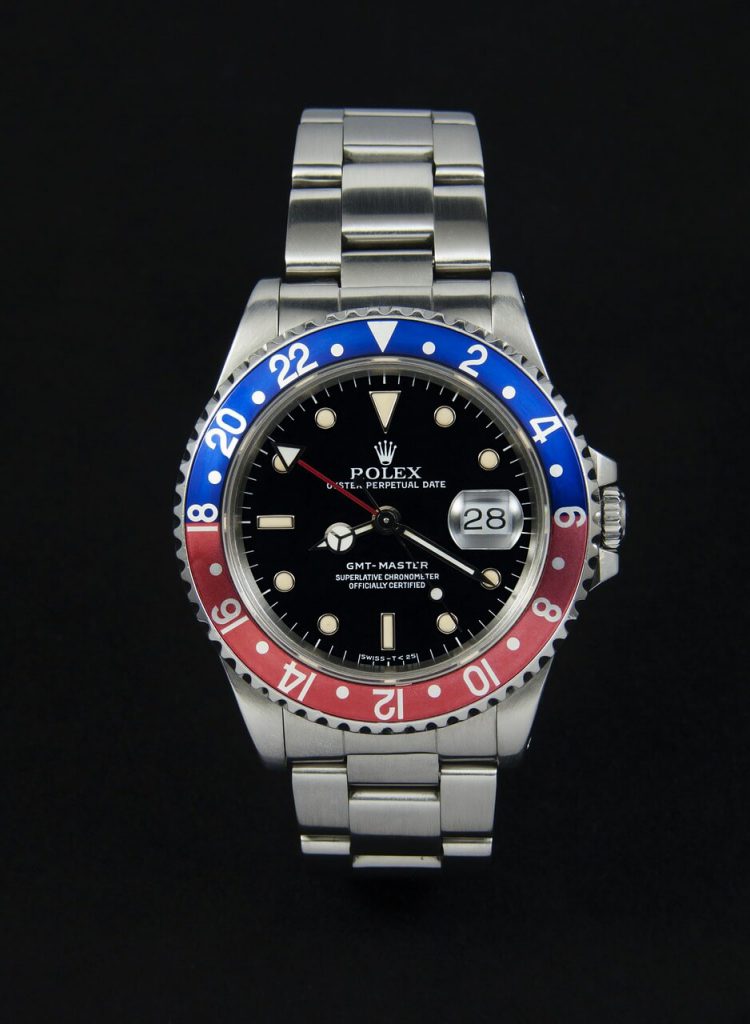
Rolex GMT Master is a perfect example of a GMT watch. Notice the long hand with red stem – that’s the GMT hour hand
Thankfully, GMT watch is here for the rescue. GMT (or Greenwich Meridian Time) watch is a watch with an additional time zone display.
On an analog watch, this is usually done by having an additional hand specifically to show the hour of the second time zone. This hand will rotate once every 24-hours so that we know the exact time (AM or PM) of our intended time zone.
There are also GMT watches that provide a dedicated subdial for the GMT hour hand. For a digital watch, it’s either displayed by default or we need to cycle through some buttons.
If you’re living in a jetsetter life and struggling to keep up with friends and families, the GMT watch can help you with that =)
(Click HERE to learn more about GMT watch)
Why You Should Get A GMT Watch?
- Second time zone display is very beneficial for those that travels frequently
Why You Should NOT Get It
- The GMT hour hand can make the dial busier and harder to read
16. Dress Watch
The next watch type is dress watch. A dress watch is very easy to tell from the others. It’s usually has a clean and not busy dial, with usually polished finishing.
It’s main purpose is to be used for a formal, black tie events so a gorgeous watch is needed. I certainly believe that less is more with dress watch and a simple yet gorgeous dial works best.
Seiko SARB033 above is one of the best value for money dress watch in the market right now
Unlike the other watch function types, dress watch is only suitable with analog or traditional display. While a digital display is better in terms of function, we don’t need those extra functionality when we’re attending a ball right?
For example, a G-Shock is a great piece of watch with many usage but it just doesn’t belong on the wrist of a guy wearing a tuxedo. If you’re dressing up for an event, make sure you get one of these dress watch to complete your style.
Why You Should Get A Dress Watch?
- To dress up, duh!
- To put the final touch on your style
Why You Should NOT Get It
- Only if you don’t foresee yourself attending one of those formal events
17. Aviator Watch
Alongside military and dive watch, aviator watch is another type of watch invented for industrial use – in this case it was for the pilots.
During the early 1900s, airplanes and airships invention begun to take off. And the one thing that the budding pilots cum inventors needed was a good wristwatch to be worn to time their flight.
And that’s the history of how the first aviator watch, the Cartier Santos, was invented. It was made by Cartier for Alberto Santos-Dumont, an aeronautical inventor based in Paris.
Aviator watch features big and bold markers, typically with equally big watch case.
It needs to be legible enough for pilots to be able to tell time at a glance.

Seiko SNK809 is an affordable automatic watch with Type-B B-Uhr design
One of the most popular aviator watch is the B-Uhr or Fliegers which has quite a bit of dark history.
It was originally used by the German bomber pilots during the WWII with two designs: the normal wrist watch Type A and the Type B.
The Type B aviator watch is the one with the distinctive inner ring design. I find it quite intuitive because the inner ring is marked with the hours while the outer ring has minute markers.
This is very different than traditional analog watch design. The logic is the short hour hand will land on the inner ring and the longer minute hand on the outer ring. Thus, the Type B B-Uhr is actually easier to read than normal watch.
Some aviator watch are also equipped with chronograph for additional function. It can also has extra scales such as tachymeter and also slide bezel rule.
Seiko SSC013 is an aviator watch with chronograph and slide bezel rule
With this scales, it’s very easy for the pilot to do complex calculations swiftly.
(Read more about Aviator Watch and how to use a slide bezel rule here)
Why You Should Get An Aviator Watch?
- A stylish watch that’s perfect for casual use
- Chronograph, tachymeter and slide bezel rule are some of the additional functions that aviator watch will has
- For those dreaming of becoming a pilot =P
Why You Should NOT Get It
- Aviator watch can be a bit bigger than normal watch
18. Atomic Radio Controlled Watch
While the quartz watch is accurate, it still has an inaccuracy of up to +-10 seconds per month. Not really that much but some people can still be ticked off by it.
What if I tell you there is a watch that can sync to the atomic clock – the most accurate watch on existence – everyday?

The Citizen Eco-Drive AT4010-50E above is a sophisticated watch with atomic radio control, chronograph, perpetual calendar while also being solar powered.
Introducing the atomic radio controlled watch. What the watch does is picking up radio signals every night and then sync its time to that of the atomic clock.
By doing this, the watch’s time is always up-to-date and accurate (imagine the +-10 seconds per month inaccuracy being reset every single day).
But one thing that we need to be aware of is the radio signal can be quite hard to detect if the watch is in a concrete jungle or sheltered. But luckily, most of these watches have a manual sync option so that you can sync the time while at an open area.
Another drawback of the watch is the signal area is limited to certain areas or countries only.
For example, the Citizen Blue Angels watch’s radio controlled sync can only work in Japan, China, North America and Europe – presumably because only these areas have radio signal stations that transmit atomic clock time.
So if you’re located outside of these areas, the watch is just like any normal quartz watch.
Why You Should Get An Atomic Radio Controlled Watch?
- A high tech watch that can sync time automatically to atomic clock
- Can keep your watch accurate all the time
Why You Should NOT Get It
- The radio controlled function will not work if you’re located outside of the specified area
19. GPS Watch
Next up is the GPS watch. Basically, there are two types of GPS watch nowadays. The first is the fitness watch nowadays that has GPS inside it, from brands such as Fitbit, Garmin, Polar etc.
With the GPS, it can track how far we’ve run, jog, walk, cycle or other activities. It’s an improvement over fitness watch that uses accelerometer only as the GPS can track the total distance traveled.

Some also has heartbeat sensor. From there, a complete record log of information such as distance, time, pace etc. can be accessed.
These are of particular importance especially to athletes. As it’s being used for sport activities, the watch is usually digital and made from plastic or rubber silicone with water resistance.
Another type of GPS watch is a quartz watch with GPS technology, such as Seiko Astron GPS and Citizen Satellite Wave.
I’d say that this is a more advanced watch than the atomic radio controlled watch above.
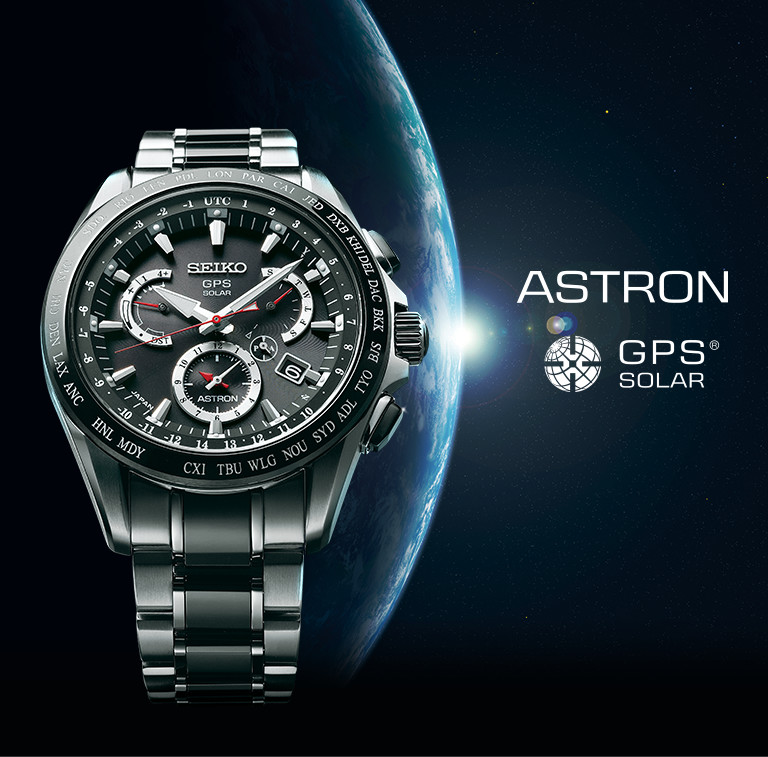
Seiko Astron is an example of a “normal” watch with the functionality to set its time to the current timezone via GPS positioning
What the watch does is to use GPS to sync its time with the satellite’s time. Since GPS signal can be captured around the world, there is no restriction on the usage of this watch, as compared to the radio controlled watch.
Certain GPS watch of this type can also automatically find out where the watch is, then set the time according to its current time zone. I believe this is the biggest advantage of any GPS watch. It makes life so simple for frequent travelers. Just a push of a button and the watch will set its time for you.
Why You Should Get A GPS Watch?
- A fitness fanatic that want to keep all the data about his/her workout
- The GPS watch can make synchronizing time very easy as well as keeping the watch accurate
Why You Should NOT Get It
- The GPS watch is quite expensive to own.
20. Smartwatch
Last but not least, the smartwatch. I don’t think I need to give any elaborate introduction to it as I’m sure you should already know a thing or two about it. The likes of Samsung Gear, Apple Watch, as well as from other smaller brands are gaining traction right now.
What the smartwatch does is bringing the smartphone on to our wrist which is very very cool. Current lineup of smartwatches can do a lot of things such as picking up calls, reading messages, notifying of calendar events, etc.
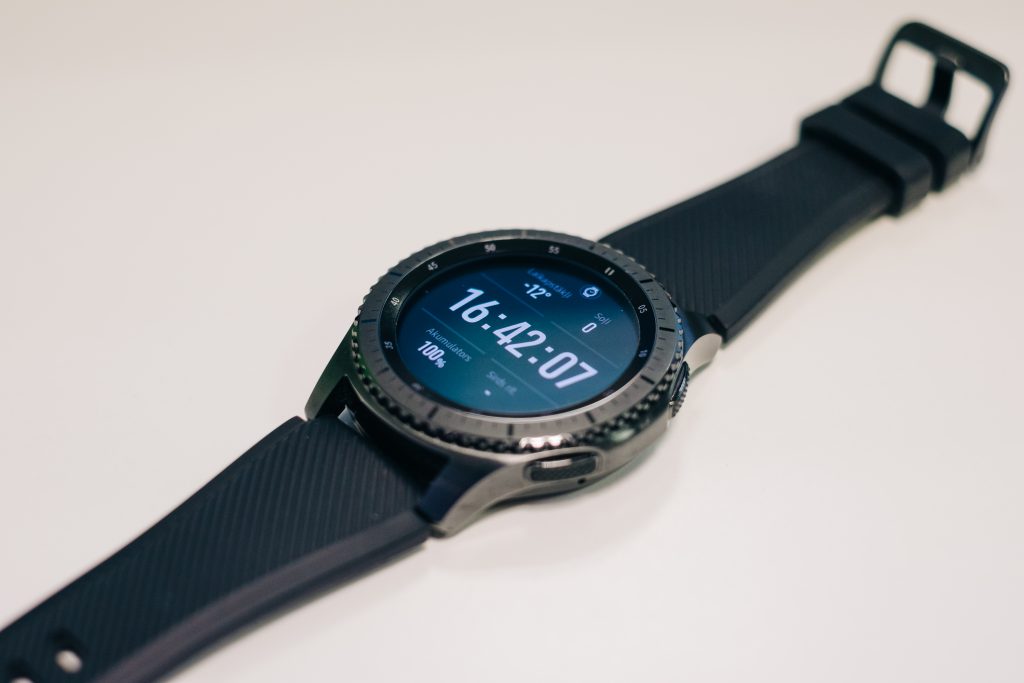
Samsung Gear S3 – a smartwatch with many functions
Some even has heartbeat sensor and GPS to function as a fitness watch. With such an amazing resume, it’s totally hard for anyone to resist it.
Another cool thing that I like about the smartwatch is how easily customize-able it is. The watch face can be changed to any template that we want, just like how we can change the wallpaper of our smartphones or computers.
This means limitless possibility of how the watch can look which is great for those that can be bored easily LOL!
A big disadvantage of the smartwatch is its low battery life. Like any smartphone, the smartwatch also need constant charging. Most of it need to be charged after every few days, which is still better than smartphones. And of course, the more you fiddle around with the watch, the faster its juice will be drained.
One way to work around this problem is by charging the watch everyday before going to sleep. It’s not really a good practice to charge a battery while it’s still halfway full, but if you’re really afraid your expensive smartwatch will die on you unannounced, this is the only way to go.
If you want to be at the forefront of current wearable technology, the smartwatch is a must-have in your watch collection.
Why You Should Get A Smartwatch?
- A myriad of functions alongside the traditional telling time: a smartphone on your wrist
- The watch face can be changed for greater flexibility
- Do many things without taking your phone out e.g taking calls, read messages, etc.
Why You Should NOT Get It
- Just like a smartphone, it needs to be charged often

Conclusion
The world of watches is constantly changing, just like the rest of the world. Just a few years ago, we never even thought about having a smartwatch that can do things a phone can.
And to think that just a century ago, wearing a watch on our wrist was not on the minds of the people in that era. In this regard, I’m truly excited as to what the future will bring. Whatever it will be, let’s be ready for it!
Hope you enjoy this article on the types of watches. Let me know if you have any questions or comments on it. Till next time.
Cheers!
Isaac
automaticwatchesformen.com

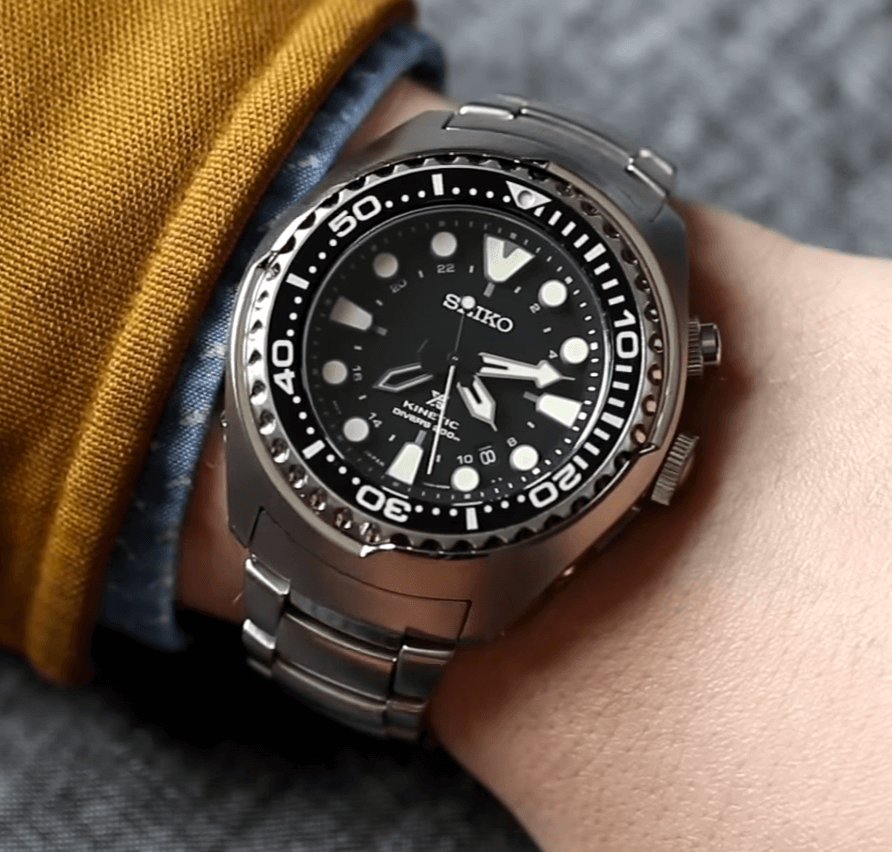
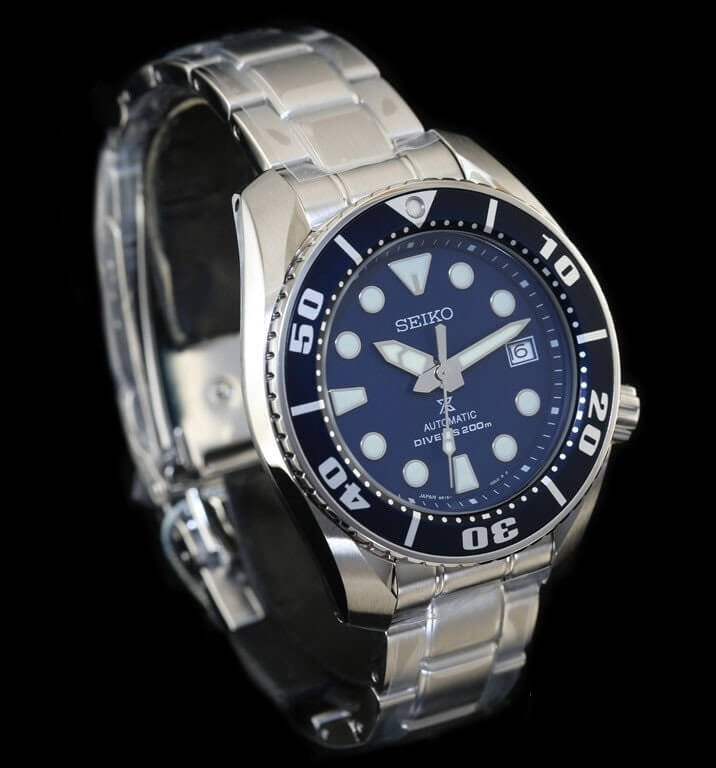

omg never new how much science in watch technology… i only use traditional simple style with arabic numbers Lorus watch-makers with “lifetime” battery …
Yeah that’s my thoughts exactly when I first got involved with watches few years ago LOL! Thanks to technological advancement, watches have evolved tremendously over the years =)
A very informative and interesting read. More articles on horology is a good thing, and I hope you continue to write, research, and expand.
Hello! I loved the article and gained a lot of useful information from it. I know that it’s more than a year old but I just wanted to point out a small typing mistake, because other than that it’s perfect to me. In the 18th section about ‘Atomic Radio Controlled Watch’, the why to buy part reads ‘Why You Should Get An Aviator Watch?’.
Thanks for a great read!
Hi Sameer. Many thanks for the comments. It honestly slipped through me lol! =)
great information.
very informative.
very reliable read for watch enthusiasts.
Wow I never thought there are 20 types of watches. I really like the solar watch because it’s quite cool to charge it by using sunlight. I also like the smartwatch since it’s so popular nowadays. Thanks for such an informative article!
Hi Handal. Solar watch surely is one of the most maintenance-free watch out there. In fact, I’m also getting one in a few days too =)
Thanks for the post very informative. You have described all the brands and the models in detail My personal choice is “Chronograph Watches”.
Wow, what a great and informative site. Unfortunatley I don’t wear watches but maybe you can help me change that.
While you show some great styles here, my problem is comfort.
I want a watch that I can put on and forget that it is there.
So if you could give me some advice and some recommendations, that would be great.
Hi Dale. If your main criteria in a watch is comfort and a put on and forget kind of watch, then you are best with a watch made from polyurethane or plastic case such as the Swatch Sistem51.
It’s an upgrade over the typical Swatch with an automatic movement. Its plastic case and strap is not only nice to look at but also comfortable to be worn long time.
A normal stainless steel watch is quite heavy and might not be your cup of tea. But there’s also titanium-made watch such as the Seiko Shogun SBDC029 (which I’ve featured in my article HERE). These titanium watches has the refined metal look while being at least half as heavy.
Let me know what you think about these two watches buddy =)
try googling the best bracelet watches or the best lightweight smart band.
I did not know there was so much details to look at in watches. I wear a Citizens Watch but I really did not know about the different types and how to look for the second hand’s movement to know whether it was automatic or not, or the so many types. I had never heard of the atomic watches. Thank you for the detailed education!
Hi Mike. I’m glad I’ve been of help to you. If there is anything you want to know more, do let me know =)
Cheers!
Wow, I learned a great deal from this. I had no idea there were that many classifications of watches so thank you for your detailed description of each. I want to look at all the affordable options you linked because I’ve recently started wearing watches more and more.
In your opinion, what is your favorite type of watch and why?
Cheers,
Melissa
Hi Melissa. For me, my favorites are the automatic movement and dive watch – in short, an automatic dive watch just like my Seiko Sumo SBDC003.
I like automatic for its refined movement that’s something totally different than the normal quartz watches today. And dive watch’s built that’s like a tank to withstand any punishment is just what I need for a worry-free watch.
How about yours? What’s your favorite type of watch Melissa?